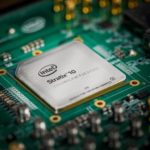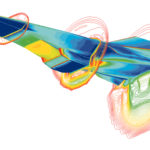Data analytics deals with making observations with various data sets, and trying to make sense of the data. When dealing with very large data sets, automated tools must be used to find patterns and relationships. One of the most important tasks from large data sets is to find an outlier, which is defined as a sample or event that is very inconsistent with the rest of the data set.
Enabling FPGAs
Field Programmable Gate Arrays (FPGAs) are an exciting technology that allows hardware designers to create new digital circuits through a programming environment. Compared to hardware that is designed once or software which must adhere to the hardware architecture, an FPGA allows developers to draw a circuit to solve a specific problem.
Intel Parallel Studio 2018: Modernize Your Code
“Intel Parallel Studio 2018 has been designed to recognize the latest CPU architectures including the Intel Xeon Scalable processor family and the Intel Xeon Phi processors in order to get maximum performance from their differing architectures, yet remain binary compatible. With the recent introduction of the Intel AVX-512 vectorization instructions, application developers can more easily take advantage of these new instructions when developing and compiling with the Intel Parallel Studio 2018.”
Intel Parallel Studio XE AVX-512: Tuning for Success with the Latest SIMD Extensions and Intel® Advanced Vector Extensions 512
With the introduction of Intel Parallel Studio XE, instructions for utilizing the vector extensions have been enhanced and new instructions have been added. Applications in diverse domains such as data compression and decompression, scientific simulations and cryptography can take advantage of these new and enhanced instructions. “Although microkernels can demonstrate the effectiveness of the new SIMD instructions, understanding why the new instructions benefit the code can then lead to even greater performance.”
Ray Tracing on Intel Xeon Phi with Embree
In computer graphics, ray tracing is a rendering technique for generating an image by tracing the path of light as pixels in an image plane and simulating the effects of its encounters with virtual objects. “Experienced computer graphics developers that understand how ray tracing works, in conjunction with a deep knowledge of the Intel Xeon Phi processor hardware have created a set of ray tracing kernels that take advantage of the underlying instruction sets and the available number of computing cores.”
Visualizing with Software Rendering with Intel Xeon Phi
There are two main categories or uses where rendering on the Intel Xeon Phi processors should be investigated. The first is what could be called “Professional rendering” and the second, “Scientific visualization.” “Software based visualization, whether for photo-realistic rendering or scientific visualization can be accelerated with a software only approach. This allows for new algorithms to be implemented faster than waiting for the next generation of hardware systems to appear. As the number of computing elements increases, performance can increase as well.”
Visualization in Software using Intel Xeon Phi processors
“Intel has been at the forefront of working with software partners to develop solutions for visualization of data that will scale in the future as many core systems such as the Intel Xeon Phi processor scale. The Intel Xeon Phi processor is extremely capable of producing visualizations that allow scientists and engineers to interactively view massive amounts of data.”
Parallel Applications Speed Up Manufacturing Product Development
The product design process has undergone a significant transformation with the availability of supercomputing power at traditional workstation prices. With over 100 threads available to an application in compact 2 socket servers, scalability of applications that are used as part of the product design and development process are just a keyboard away for a wide range of engineers.
Intel Parallel Studio XE 2018 For Demanding HPC Applications
“For those that develop HPC applications, there are usually two main areas that must be considered. The first is the translation of the algorithm, whether simulation based, physics based or pure research into the code that a modern computer system can run. A second challenge is how to move from the implementation of an algorithm to the performance that takes advantage of modern CPUs and accelerators.”
The Internet of Things and Tuning
“Understanding how the pipeline slots are being utilized can greatly increase the performance of the application. If pipeline slots are blocked for some reason, performance will suffer. Likewise, getting an understanding of the various cache misses can lead to a better organization of the data. This can increase performance while reducing latencies of memory to CPU.”









